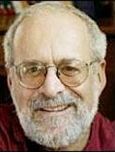
Annette Simmons
Annette Simmons asserts that the power of stories derives from stimulating feelings and focusing these sentiments on a goal or action in her book, Whoever Tells the Best Story Wins: How to Use Your Own Stories to Communicate with Power and Impact

Nancy Duarte
Nancy Duarte, who designed Al Gore’s original Inconvenient Truth slides, concurs in her most recent book, Resonate:  Present Visual Stories that Transform Audiences
Present Visual Stories that Transform Audiences

George Lakoff
UC Berkeley professor George Lakoff, in his classic, Metaphors We Live By, contends that stories create a framework that directs and filters attention, and enables the speaker to “control the conclusions.”
Simmons suggests the following sources of stories:
1.Personal stories of your successes
2.Personal stories of failures, to demonstrate learning, and to build trust and credibility
3.Stories of mentors and other people who influenced you
4.Memorable stories from books, movies, and current events that influenced you.

Aristotle
She referred to Aristotle‘s premise that the best stories contain knowledge (logos), feeling (pathos), and credibility (ethos) when she offered guidelines for effective story-telling:
1. Describe events in a way that evokes a concrete, sensory experience, as it is the way to stimulating emotion
2. Be brief
3. Offer measurable outcomes
4. Enable the listener to similar situations, organizations
5.Solidarity, or enabling the listener to experience another person’s point-of-view
-*What practices enable you to craft influential, memorable “stories”?
LinkedIn Open Group – Psychology in HR (Organisational Psychology)
Twitter: @kathrynwelds
Google+
Facebook Notes:
Blog: – Kathryn Welds | Curated Research and Commentary
©Kathryn Welds




















 The Leader’s Guide to Storytelling: Mastering the Art and Discipline of Business Narrative
The Leader’s Guide to Storytelling: Mastering the Art and Discipline of Business Narrative Winning the Story Wars: Why Those Who Tell (and Live) the Best Stories Will Rule the Future
Winning the Story Wars: Why Those Who Tell (and Live) the Best Stories Will Rule the Future












